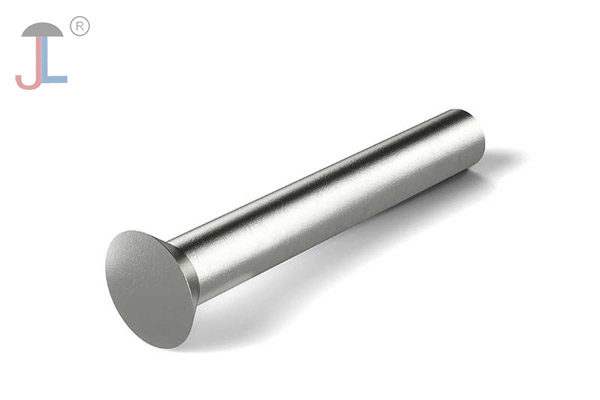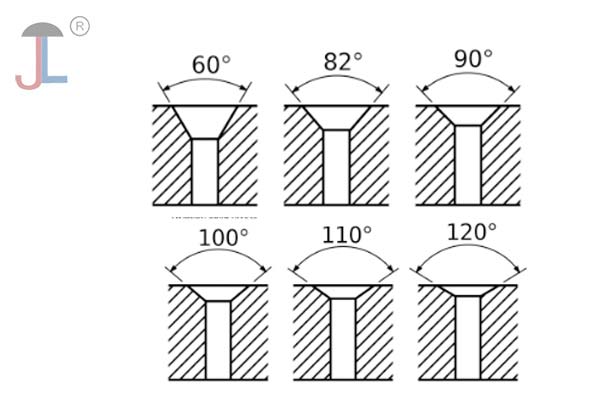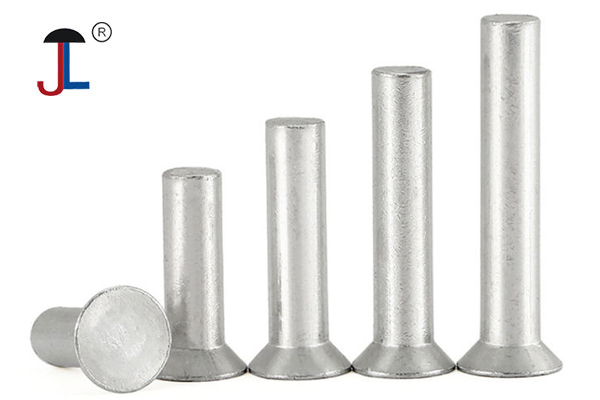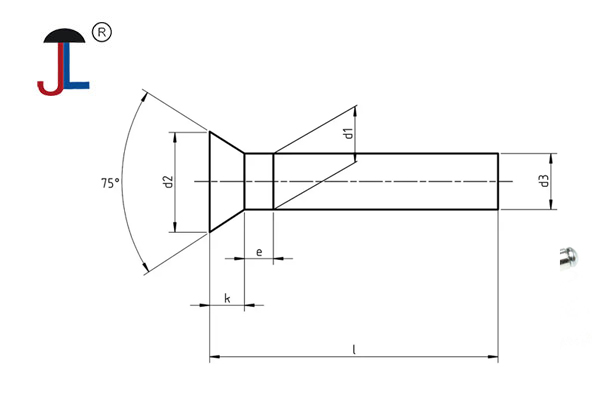To install countersunk rivets properly, here's a step-by-step guide:
1. Prepare the Materials:
- Countersunk Rivets: Choose the correct type, size, and material for your project. Countersunk rivets have a flat, angled head designed to sit flush with the material surface. They come in various materials like aluminum, steel, and stainless steel.
- Workpieces: Ensure the materials you are joining are clean and properly aligned.
- Drill: You'll need a drill and drill bits.
- Countersink Tool: This is essential for creating the angled recess that matches the countersunk rivet head. You can use a dedicated countersink bit or a combination drill and countersink bit. Make sure the angle of the countersink matches the angle of the rivet head (commonly 90 or 100 degrees).
- Deburring Tool (optional): For removing any sharp edges after drilling.
-
Rivet Gun: The type of rivet gun needed depends on the type of countersunk rivet you are using (solid or blind/pop).
- For solid countersunk rivets: You'll need a rivet gun (air-powered or hand-operated) and a bucking bar.
- For blind/pop countersunk rivets: You'll need a pop rivet gun.
- Safety Glasses: Always wear safety glasses to protect your eyes.
2. Drill the Holes:
- Determine the correct drill size: The drill bit should be slightly larger than the shank (body) of the rivet. Refer to the rivet manufacturer's specifications or a rivet size chart for the recommended drill size.
- Drill through both workpieces: Ensure the holes are aligned. For best results, clamp the workpieces together to prevent movement.
3. Countersink the Top Hole:
- Select the correct countersink tool: Choose one with an angle that matches the countersunk rivet head.
- Countersink the entrance of the top hole: Apply gentle, consistent pressure while drilling to create a clean, angled recess. The depth of the countersink should allow the rivet head to sit flush with or just slightly below the material surface. It's better to start with a shallower countersink and deepen it gradually to achieve the perfect fit.
- Remove any burrs: Use a deburring tool or a larger drill bit held by hand to gently remove any sharp edges around the countersunk hole. This ensures the rivet head sits cleanly.
4. Install the Rivet:
-
For Solid Countersunk Rivets:
- Insert the rivet through the aligned holes, with the countersunk head on the countersunk side.
- Place the bucking bar against the manufactured head of the rivet on the opposite side.
- Using the rivet gun with a flush rivet set, apply consistent pressure to the tail of the rivet. This will deform the tail and create a secure joint. The bucking bar provides the necessary resistance.
- Continue until the rivet is set and the head is flush with the material surface.
-
For Blind/Pop Countersunk Rivets:
- Insert the rivet stem into the nosepiece of the pop rivet gun.
- Place the rivet body into the aligned holes, with the countersunk head on the countersunk side.
- Ensure the gun's nosepiece is flat against the material surface around the rivet head.
- Squeeze the handles of the rivet gun. This will pull the mandrel through the rivet body, causing it to expand and clamp the materials together.
- Continue squeezing until the mandrel snaps off. The installed rivet head should now be flush with the countersunk surface.
Important Considerations:
- Hole Size: An incorrectly sized hole can lead to a weak joint or difficulty setting the rivet.
- Countersink Depth: Too shallow, and the rivet head will protrude. Too deep, and the joint may be weakened.
- Rivet Length: Choose a rivet length that is appropriate for the thickness of the materials you are joining. The correct length will allow enough material for proper setting without excessive buckling.
- Material Compatibility: Ensure the rivet material is compatible with the materials being joined to prevent corrosion or other issues.
By following these steps, you can install countersunk rivets to create strong, flush, and aesthetically pleasing fastenings.
If you're still wondering how countersunk rivets differ from other types, check out our popular guide: [What is a countersunk rivet].




